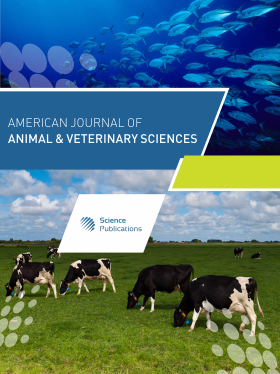Prevalence of Abomasal Nematodes in Sheep Slaughtered at Baneh Town
- 1 Islamic Azad University, Iran
Abstract
Livestock production covers up to 40% of the gross value of agricultural production globally. Gastrointestinal nematodes of small ruminants are one of the major causes of productivity loss. This study was carried out to determine the correlation between the prevalence, seasonal incidence and geographical distribution of abomasal worm infection of native sheep in Baneh Town of Iran, suitable for animal husbandry. From February 2011 to February 2012 the contents of abomasums of 400 sheep were washed separately in a 100 mesh sieve. The worms present in each abomasum were collected separately, counted and preserved in 70% alcohol containing 5% glycerin for identification to the species. The overall percentage of infection was 25.36% and Haemonchus contortus, Teladorsagia circumcincta, Marshallagia marshalli, Ostertagia occidentalis, Ostertagia trifurcata and Parabronema skrjabini were 6 species identified in studied areas. The overall prevalence rate and intensity of worm’s burden as representative of Iran, were low, although Teladorsagia circumcincta was the most prevalent and frequent worm species found. Using Chi-Square and ANOVA, no significant relationship was found between prevalence, season, age and sex.
DOI: https://doi.org/10.3844/ajavsp.2013.142.145

- 5,804 Views
- 6,268 Downloads
- 9 Citations
Download
Keywords
- Prevalence
- Abomasal Nematodes
- Sheep
- Baneh Town
- Iran
